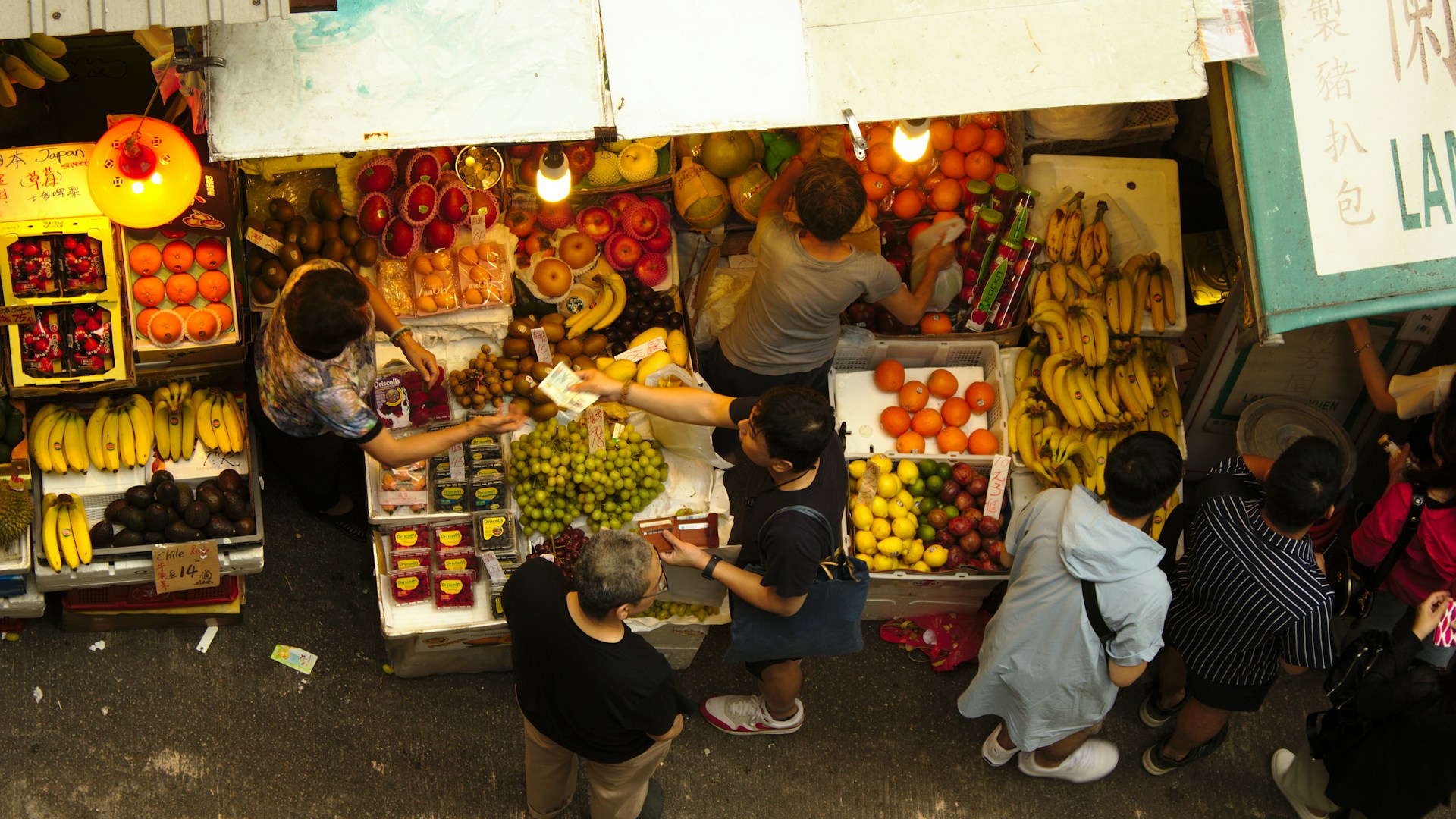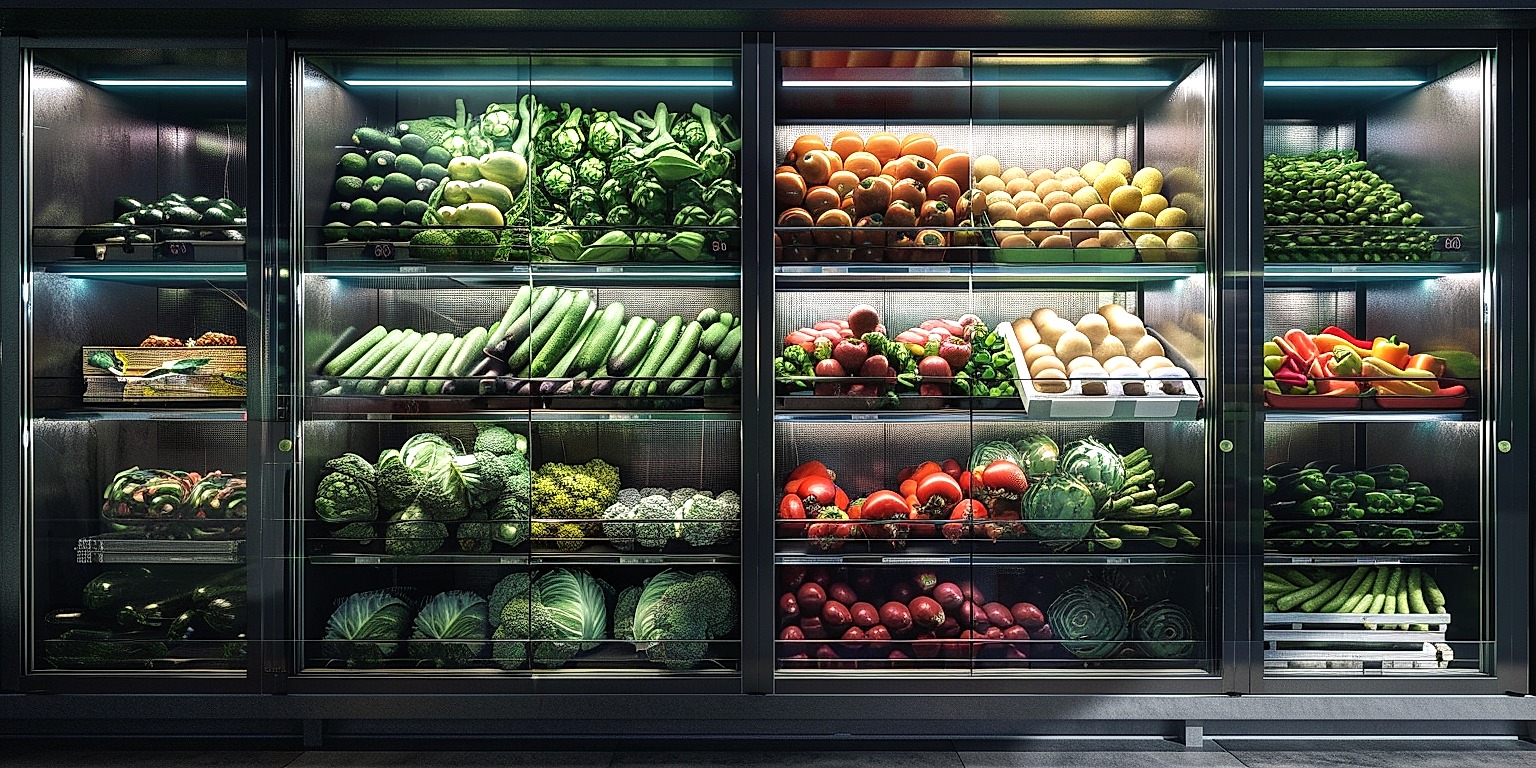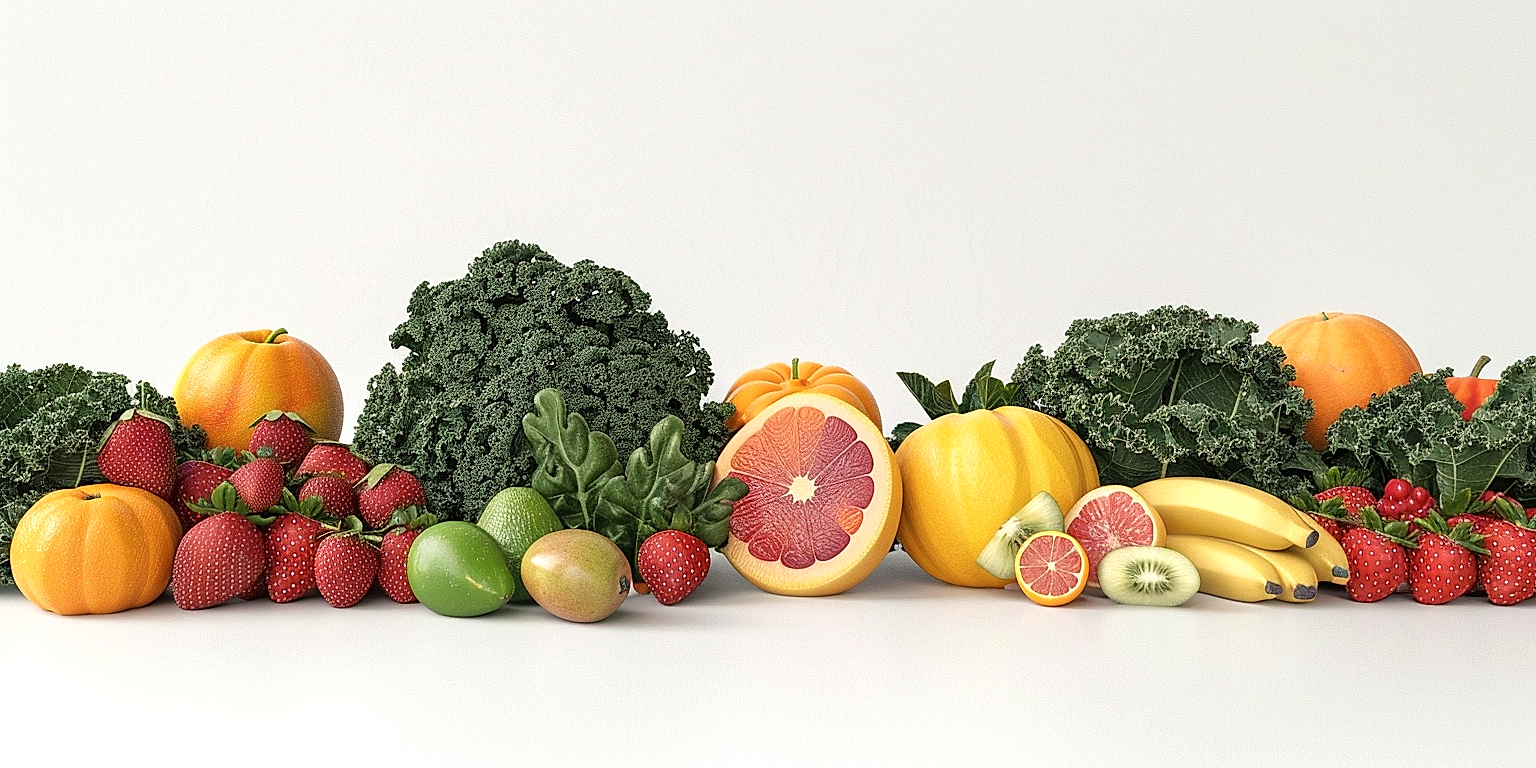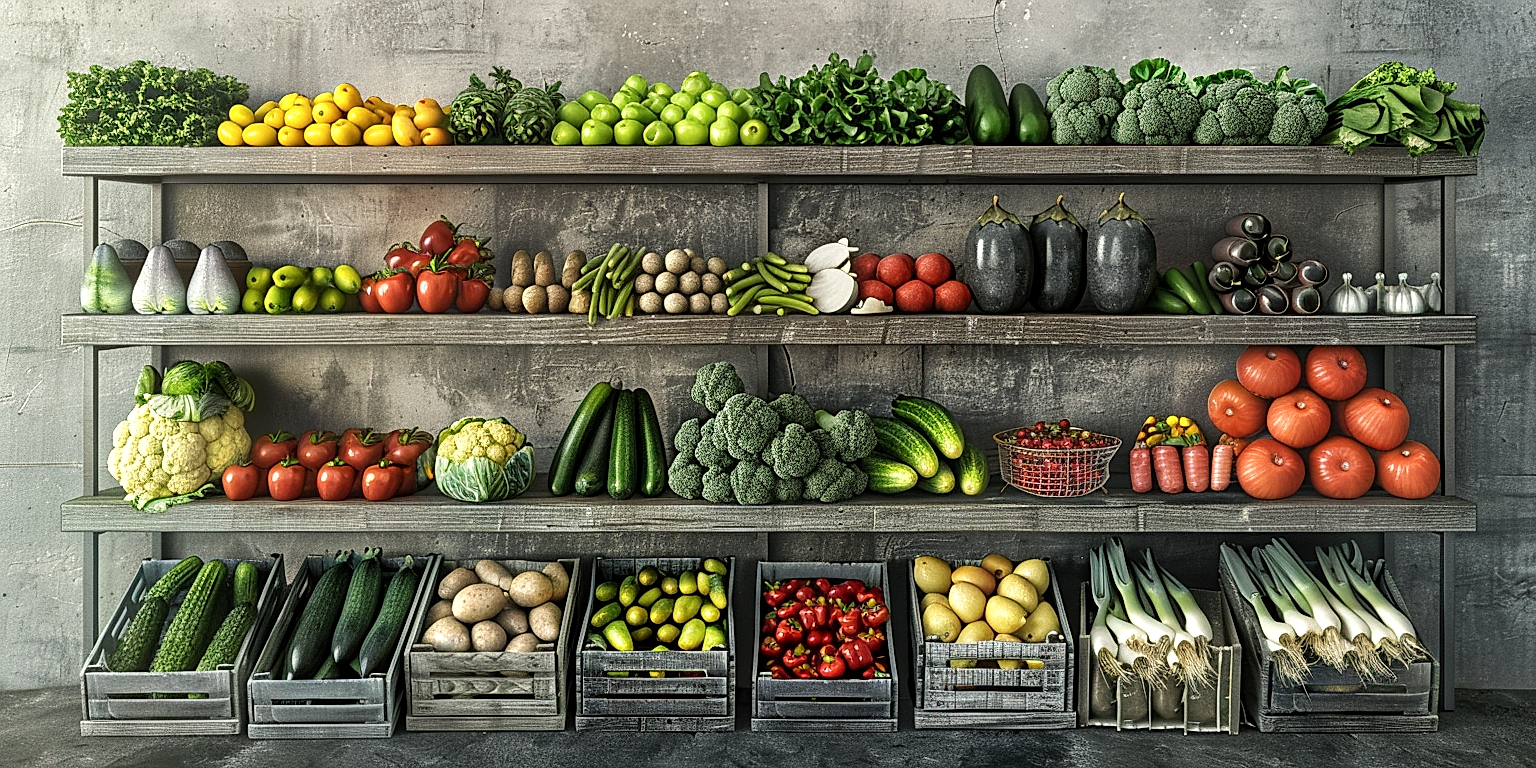Understanding the seasonality of produce is integral to making informed choices both for consumers and businesses.
This awareness brings numerous benefits, encompassing not only taste and nutritional value, but environmental impact and cost effciency as well.
Despite its importance, many lack a firm grasp on this subject.
As a business, grasping the nuance of seasonal produce can bolster credibility and customer satisfaction.
The time has come to address these knowledge gaps.
In this article, we will explore practical, effective methods businesses can use to educate their customers about the impact and benefits of seasonal produce.
Contents
- Ways To Educate Customers On Seasonality In Produce
- 1. Create informative seasonal produce calendars
- 2. Offer in-store seasonal produce cooking classes.
- 3. Distribute informative newsletters about seasonal produce.
- 4. Post blog articles on seasonality topics
- 5. Hold Interactive Seasonal Produce Tasting Events
- 6. Provide Recipes Featuring Seasonal Fruits/Vegetables
- 7. Use Attractive In-Store Seasonal Produce Displays
- The Bottom Line
Ways To Educate Customers On Seasonality In Produce
1. Create informative seasonal produce calendars
One of the most effective ways to educate customers about seasonality in farm produce is through the creation of informative seasonal produce calendars.
These calendars essentially serve as year-round guides, showing which fruits and vegetables are in season each month.
This aids customers in making informed choices when shopping for fresh produce.
But, unlike regular calendars, these specialty calendars require a certain level of expertise and knowledge in regards to the farming seasons.
Research on the seasonality of different fruits and vegetables is therefore key in designing an accurate and resourceful produce calendar.
Additionally, for the calendar to remain relevant, it must be constantly updated to accommodate for changes in farming patterns caused by factors such as climate change.
Therefore, the creation of a seasonal produce calendar is not a one-time event but a continuous process.
It is also advisable that the calendar is designed in a clear and visually appealing manner.
This will make it easier for customers to understand and therefore more likely to utilize it in their shopping.
Using vibrant colors to designate different seasons and including pictures of the fruits and vegetables can also make the calendar more engaging.
The calendar should contain engaging captions detailing more information about the produce, including their health benefits, a sample recipe, or interesting facts about their growing process.
This necessitates working with researchers, nutritionists, and possibly even chefs to come up with captivating and informative captions.
Digitizing these calendars and making them available online is also an excellent move.
This allows customers to access the information at their convenience, whether at home planning their shopping list or at the store deciding between different produce.
Finally, promoting the calendars through various channels, including social media, newsletters, and in the produce section, will ensure that as many customers as possible are exposed to, and can benefit from, the calendars.
To encourage utilization of the calendars, they should be freely available to customers, either in print form at the markets or as a downloadable resource online.
2. Offer in-store seasonal produce cooking classes.
One of the most effective ways to educate customers on seasonality in produce is to offer in-store seasonal produce cooking classes.
By hosting these types of classes, you can enable customers to taste, touch, and smell seasonal fruits and vegetables first hand, thereby promoting an experiential learning opportunity.
These cooking sessions can be customized according to the seasonal availability of produce, thereby providing a continual source of education throughout the year.
Moreover, hosting cooking classes allows the opportunity to bring in local chefs who understand how to best utilize the flavors of the season, adding an additional layer of authenticity and expert knowledge to the learning experience.
You can invite nutrition experts to provide extra information on the health benefits of seasonal eating.
Customers often appreciate assisted, live-learning experiences and find them more valuable than reading about seasonal produce.
Besides offering a valuable learning experience, these classes can also boost customer engagement and loyalty, which can in turn increase store traffic and sales.
Through these classes, customers can learn not only about the flavors of the season, but also about how to select the best quality produce, making them more confident shoppers.
The interactive nature of cooking classes also encourages customers to ask questions and engage in discussions, promoting a deeper understanding of the topic.
Keeping the classes free or nominal priced can help to attract more customers, making it a win-win situation for both the store and the customers.
You can also offer recipe cards at the end of the class, allowing customers to experiment with seasonal recipes at home.
Taking these classes can also help customers develop new cooking skills which can broaden their culinary repertoire, promoting a long-lasting relationship with your store.
While setting up cooking classes can require some initial investment and planning, the potential returns in terms of customer education, engagement, and trust can be extremely rewarding.
Overall, in-store cooking classes can be a creative and effective way to educate customers about the importance of seasonality in produce.
Distributing informative newsletters is a powerful tool to educate customers on the seasonality of produce.
These newsletters can be made rich with valuable content, consisting of information about seasonal fruits and vegetables, their benefits, and their times of harvest.
As an engaging approach, incorporating exclusive recipes using seasonal produce could encourage customers to buy seasonally.
Newsletters can serve as a regular reminder for customers about the importance and benefits of eating seasonally, thus promoting healthy and sustainable eating habits.
These newsletters can be distributed either in print while customers check out or electronically via email.
Electronic newsletters not only save paper but also guarantee that the information reaches the user directly, thus enhancing communication.
The design of the newsletters should be appealing and interactive, making it easier for customers to read and understand the information.
They can be made more engaging with the addition of puzzles or quizzes related to seasonal produce and exciting offers or discounts on in-season fruits and vegetables.
High-quality, vibrant images of the featured produce can make these newsletters more attractive and would likely draw the customers’ attention to them.
You can partner with local farmers or nutritionists to contribute articles, thereby adding authenticity and showing your store’s commitment to the community.
Newsletters should be made easily accessible to the customers, in store, on the website, and via social media platforms.
A section can be included in the newsletter wherein customers can share their own creative recipes or experiences with seasonal produce, thereby encouraging community participation.
Keep in mind that while the primary objective of the newsletters is to educate, they should also be entertaining and not look like a purely promotional activity.
The frequency of these newsletters can be monthly or bi-monthly, ensuring to keep the content fresh and to maintain customer engagement.
With careful planning, implementing, and consistency, informative newsletters can help bridge the gap between customers and seasonal produce.
4. Post blog articles on seasonality topics
One excellent method for educating customers about seasonal produce is through blog posts.
A blog is a powerful tool that provides a platform to inform, educate, and communicate with your customer base.
The focus can be on the benefits of eating seasonally, from the enhanced flavor and nutritional value to the positive environmental impact.
Further, writing blog posts provides an opportunity for businesses to communicate to customers why they should care about seasonality.
These blog posts can delve deep into the specifics of each season’s offerings, such as the arrival of sweet corn in the summer or the hearty root vegetables of winter.
Moreover, they can discuss how to pick the best seasonal fruits and vegetables, offering key tips and tricks.
For example, how to tell when a melon is ripe or what the best size for Brussels sprouts is.
Additionally, these articles can include a focus on local farmers, thereby supporting the community and educating customers on where their food comes from.
Highlighting different farming practices and their impact on both the produce and environment can further strengthen the customers’ understanding of seasonality.
It’s also beneficial to include easy and delicious recipes in these blog posts using the featured seasonal produce.
This not only provides customers with practical applications for the produce, but also introduces them to perhaps unfamiliar fruits and vegetables.
Beyond this, the blogs can extend engagement by inviting customers to comment, ask questions, or share their own experiences with seasonal eating.
Through consistent publishing, your customers will begin to anticipate these informative posts and rely on them to guide their shopping and eating-habits.
Education about seasonality in produce can lead to healthier diets, lower environmental impacts, and a stronger local economy.
As such, sharing blog posts on seasonality topics plays a significant role in fostering an educated and more mindful community.
5. Hold Interactive Seasonal Produce Tasting Events
One fantastic way to educate customers on seasonality in produce is to hold interactive seasonal produce tasting events.
This gives them an opportunity to experience the unique tastes and textures of different fruits and vegetables each season.
Such events can be an exciting, educational experience as it not only exposes customers to the concept of seasonality but also lets them explore new flavors.
The live demonstrations of how to use seasonal produce in simple, yet delicious recipes will be highly appreciated by customers.
Interactive seasonal produce tasting events can really help customers understand the value and importance of consuming local, seasonal produce.
Having a knowledgeable person lead these events is important as they can provide insights on the nutritional benefits and the best ways of cooking each seasonal produce.
At these events, customers can be educated about how consuming seasonal produce supports local farmers and contributes to the sustainability of the environment.
Customers can also be encouraged to ask questions during these events, further enabling them to understand the significance and benefits of seasonality in produce.
Importantly, these events should focus on promoting seasonality rather than pushing certain products for sale.
Additionally, offering samples of fresh, seasonal fruits and vegetables for tasting can create an interesting and memorable experience for your customers.
Provide recipe cards featuring the used seasonal produce so that customers can recreate the recipes at home.
Marketing these events well in advance and broadly will also help to attract a larger audience.
Collaborating with local chefs or dietitians to host these events can add a more authentic touch and act as an added draw for customers.
Interactive seasonal produce tasting events allow for engaging conversations between the customers and the produce experts.
Lastly, do remember to follow-up after these tasting events by asking for customer feedback and suggestions on improving future events.
6. Provide Recipes Featuring Seasonal Fruits/Vegetables
Lorem ipsum dolor sit amet, consectetur adipiscing elit. Providing customers with recipes featuring seasonal fruits and vegetables is a highly effective and engaging way to educate them on seasonality in produce. Incorporating seasonal produce into meals is not just about enhanced flavor and nutritional quality, but it also supports local growers and is good for the environment.
In order to create a successful recipe program that incorporates seasonal produce, it’s important to have a deep understanding of the key produce items grown in each season. Spring might bring blossoms of apricots, cherries, and rhubarb, while Summer offers an abundance of berries, peaches, cucumbers, and tomatoes. Autumn showcases a host of apples, pears, pumpkins, and squash, and Winter caps the year off with citrus fruits, pomegranates, and hardy root vegetables.
Make an effort to highlight the variety, flavor, and joy of cooking and eating with seasonality in mind.
Another crucial part of creating a successful recipe program is establishing clear and concise communication with your customers. This can involve creating a weekly or monthly recipe newsletter or use of social media platforms to share appetizing images and easy-to-follow steps of the recipes.
Try creating a recipe corner in your store, where customers can find printed recipe cards of the week. Make these recipes simple and inspiring, using a variety of seasonal fruits and vegetables. This encourages the customer to buy additional produce items for their meals.
In addition to providing delectable recipes, ensure to include interesting and helpful tips related to the use of each produce item. Knowledge about how to select the best fruit, proper storage methods and the ideal way to cut or peel, can all be bundled into the recipe cards.
Regular staff training is also necessary as customers may have questions about the recipes. The well-informed staff can reassure and guide customers about the ease of preparation and the benefits of using seasonal produce.
Another excellent way to draw attention to seasonal recipes is by hosting cooking demonstrations within the store. Live cooking demonstrations not only bring the recipes to life but also allow customers to taste the delightful result, making them more likely to try it at home.
It’s also useful to highlight the cost-effectiveness of using seasonal produce. As we all know, anything that is in abundance and easy to procure is often cheaper. So leverage this aspect in your recipes, showing customers that eating seasonally can be a win-win situation in terms of health and saving money.
Don’t forget to consider diet trends too. You can create special recipe cards for vegan, gluten-free, and Paleo diets using seasonal produce. This could be another great way of convincing customers to try such recipes.
Do remember that consistency is key in the success of providing recipes featuring seasonal fruits and vegetables. A continuous and fresh flow of recipes would keep customers engaged, and also make them understand and appreciate the importance of eating seasonally. As you progress, ask the customers to share their experiences, photos and even their own recipes, making it a collaborative and interactive process.
To sum up, providing recipes featuring seasonal fruits and vegetables is indeed a creative and sustenance way to educate customers about the benefits of seasonality in produce. A properly planned and well-executed program can remarkably influence the buying habits of customers and make them staunch supporters of seasonal eating.
7. Use Attractive In-Store Seasonal Produce Displays
Visual learning is a powerful tool which can be utilised to educate customers about the seasonality in produce.
Attractive in-store displays can serve as effective and interactive educational materials.
These displays can be strategically located throughout your store to catch the eyes of your customers and entice them to explore the seasonal produce you offer.
By creating visually engaging displays, customers are more likely to stop, look, and learn about the fruits and vegetables they are buying.
You can include signage, tags, or labels providing informative facts about each seasonal fruit or vegetable.
This can contain information such as its peak season, how to select it for ripeness, and ways to cook or prepare it.
There can also be a section designated to sample recipes that utilise these seasonal items, sparking new ideas for home cooking.
The variety of produce can be segregated by the seasons which they’re harvested in, and this can be highlighted in the display.
This can subtly tell customers that those fruits and vegetables are of the best quality and taste at that time of the year.
Beyond just being visually pleasing, these displays also reinforce the idea of ‘freshness’ that comes with seasonal produce.
Special deals or promotions can be highlighted to pair with these seasonal displays to further encourage purchases.
The use of bold, vibrant colours and ample lighting can accentuate these displays, making them hard to overlook.
Remember, an attractive display that is constantly updated, creates a sense of curiosity among customers and a personal connection to the produce they buy.
Another integral part of the in-store displays would be allowing space for interaction.
A small area for customers to touch, smell, and even taste the produce can help them better understand the quality and flavour that comes with seasonality.
This kind of multi-sensory engagement helps to build an emotional connection, which is crucial in educating and influencing customers’ buying behaviour.
Finally, keep in mind that educating customers is a gradual process – through continually providing engaging and informative displays, customers will begin to understand and appreciate the concept of seasonality in produce.
The Bottom Line
After exploring these innovative strategies, it is clear that capitalizing on seasonality can significantly enhance customer engagement and provide a unique shopping experience.
A focus on seasonal produce through calendars, cooking classes, newsletters, blogs, tasting events, recipes, and attractive displays can inform and excite customers about the benefits of eating seasonally.
This creates opportunities not just to boost immediate sales but also establish stronger connections with customers by enriching their knowledge and culinary skills.
Ultimately, these initiatives contribute towards a more sustainable and healthier food culture.
This proves that the importance of seasonality extends way beyond mere trends and is instead, a powerful tool for grocers and customers alike.




